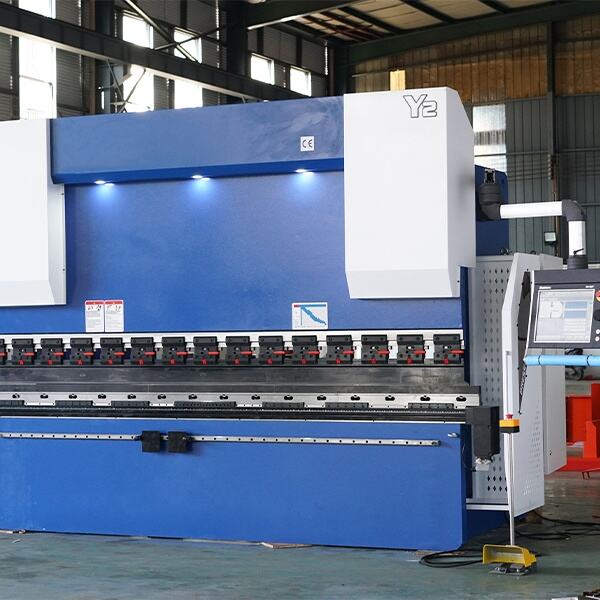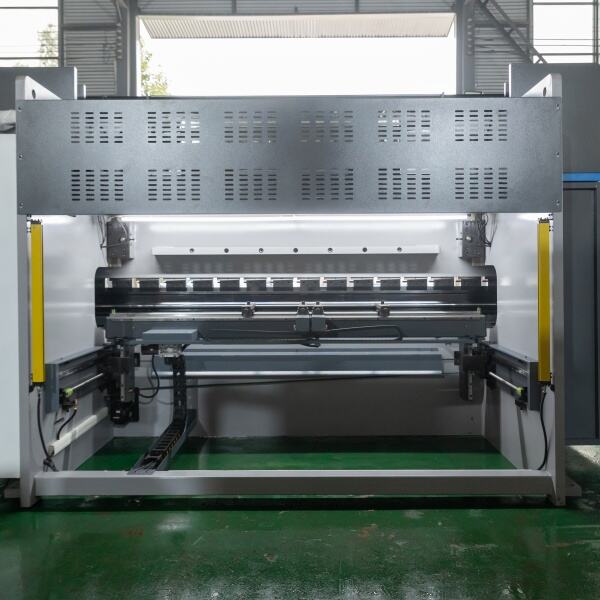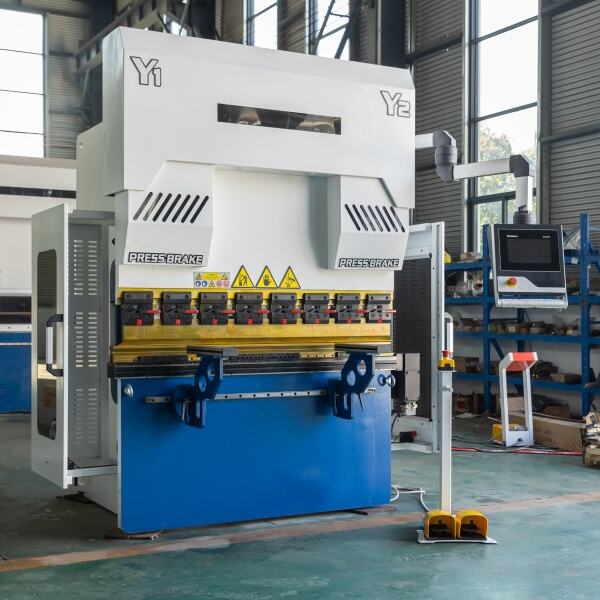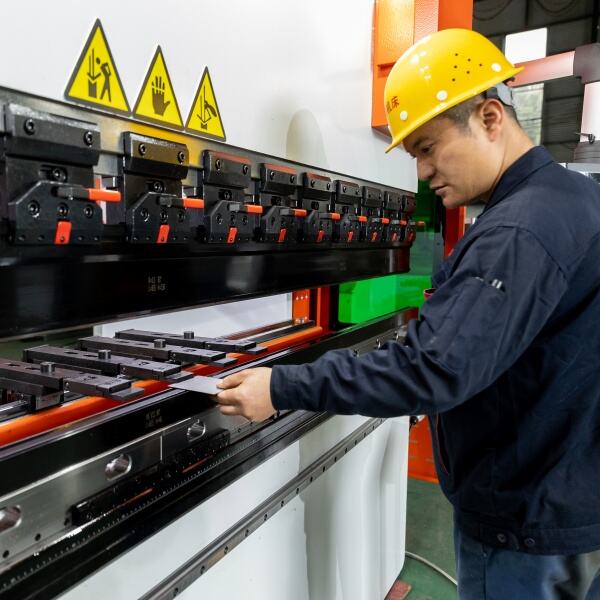
Choosing the right CNC press brake requires a systematic evaluation of your production needs, material characteristics, and industry requirements— a process that RAYMAX simplifies for clients by leveraging our 22 years of manufacturing expertise and deep understanding of metal forming applications. With 4000+ global clients across automotive, ship, railway, aviation, power, petrochemical, and light industries, we have refined a decision-making framework that helps clients select a CNC press brake that delivers long-term value, efficiency, and precision. Below is a step-by-step guide to choosing a CNC press brake, tailored to address key considerations and align with our machine’s capabilities. Step 1: Define Your Production Requirements and Application The first step is to clearly outline your production goals and the specific tasks the CNC press brake will perform. Key questions to answer include: - Production Volume: Are you producing small batches (e.g., 10-100 parts per day for light industry) or high volumes (e.g., 1000+ parts per day for automotive)? High-volume production requires features like automatic feeding systems and quick-change tooling to minimize downtime, while small-batch production may prioritize flexibility and ease of programming. For example, a light industry client producing custom electrical enclosures would benefit from a compact CNC press brake with a standard CNC system, while an automotive manufacturer needs a high-capacity model with automatic feeding. - Part Complexity: Do your parts require simple bends (e.g., 90-degree angles for power plant brackets) or complex sequences (e.g., 5+ bends for aviation fuselage parts)? Complex parts demand an advanced CNC system with 3D simulation and automatic tool compensation to avoid errors. Our advanced Fanuc-based CNC system, for instance, is ideal for aviation clients needing to simulate multi-step bends, while a standard Siemens system suffices for simple parts. - Production Timeline: Do you have tight deadlines that require fast setup and bending speeds? Our CNC press brakes with quick-change tooling and high ram speeds (up to 150mm/s) reduce setup time by 35% and bending time by 40% compared to conventional models— a critical advantage for shipyards with urgent hull production schedules. Step 2: Analyze Your Material Characteristics The type, thickness, and strength of the metal you work with are critical factors in choosing a CNC press brake, as different materials require different bending forces and tooling: - Material Type: Carbon steel, stainless steel, aluminum, and alloys each have unique properties. For example, stainless steel is prone to work hardening, so it requires a CNC press brake with gradual pressure application and polished tooling to prevent scratching. Aluminum is lightweight but ductile, needing lower bending force and faster ram speeds. Our technical team can recommend the right machine configuration for your material— for example, a 1600kN model for 10mm carbon steel sheets or an 800kN model for 6mm aluminum sheets. - Material Thickness: The maximum thickness of metal you need to bend determines the machine’s bending capacity (force in kN). As a general rule, thicker materials require higher force: - 0.5-6mm thick materials (light industry, automotive thin parts): 500-1000kN capacity. - 6-15mm thick materials (automotive chassis, railway components): 1200-2000kN capacity. - 15-30mm thick materials (shipbuilding, power plants): 2200-3000kN capacity. A power plant client needing to bend 20mm steel plates for boiler supports, for example, would require our 2500kN CNC press brake. - Material Strength: High-strength metals (e.g., HSLA steel for automotive) require higher bending force than low-strength metals (e.g., mild steel). Our CNC press brakes can handle materials with tensile strengths up to 1000MPa, with the hydraulic system adjusted to deliver the necessary force without damaging the material. Step 3: Determine Key Machine Specifications Based on your production and material needs, you can select the critical specifications of the CNC press brake: - Bending Capacity (Force): As discussed, this aligns with material thickness and strength. Choose a capacity that exceeds your maximum requirement by 10-20% to account for material variations (e.g., if you typically bend 10mm steel sheets, a 1600kN model provides a safe margin over the 1200kN minimum required). - Bending Length: This is the maximum length of metal sheet you need to bend. For example, a railway client producing 6m long track components needs a 6000mm bending length model, while a light industry client making 1m electrical panels can use a 1250mm model. - CNC Control System: Select a system based on part complexity. Standard systems (Siemens) work for simple parts, while advanced systems (Fanuc) are for complex, high-precision applications. If you plan to integrate the machine with industry 4.0 systems, choose an advanced CNC system with remote monitoring capabilities. - Tooling Compatibility: Ensure the machine supports the tooling you need— standard V-dies for simple bends, radius dies for curved parts, or custom dies for non-standard shapes. Our CNC press brakes are compatible with global tooling standards (WILA, Wilson), making it easy to source replacement or custom tooling. Step 4: Evaluate Automation and Efficiency Features Automation features can significantly impact productivity and labor costs. Consider which features align with your production volume: - Automatic Feeding System: Ideal for high-volume production, this feature loads/unloads materials automatically, reducing labor by 70% and increasing volume by 40%. Recommended for automotive and aviation clients with 1000+ parts per day. - Quick-Change Tooling: Reduces tool change time from 30+ minutes to <10 minutes, suitable for clients with multiple part types (e.g., light industry producing different electrical enclosures). - Predictive Maintenance: Alerts operators to upcoming service needs (e.g., oil replacement, tool sharpening), minimizing unexpected downtime. Valuable for all industries, especially those with continuous production (e.g., power plants). Step 5: Consider Safety, Maintenance, and Support A CNC press brake is a long-term investment, so safety, maintenance, and after-sales support are critical: - Safety Compliance: Ensure the machine meets international standards (CE, ISO 9001) and includes features like emergency stops, light curtains, and overload protection. Our CNC press brakes are fully compliant, with safety features tested and certified. - Maintenance Ease: Choose a machine with easy access to key components (e.g., hydraulic filters, CNC modules) to simplify routine maintenance. Our machines are designed with removable panels and clear maintenance guidelines, reducing service time. - After-Sales Support: Look for a manufacturer with a global support network— including installation, training, and spare parts supply. RAYMAX provides on-site installation by our technical team, online/offline training, and 24/7 technical support. We also maintain regional spare parts warehouses to ensure quick delivery (e.g., 2-3 days for parts in Southeast Asia, 3-5 days in Western Europe). Step 6: Request a Demo or Test Bend Before finalizing your choice, request a demo or test bend with your actual material. This allows you to verify the machine’s performance— for example, checking bending accuracy, speed, and ease of operation. We offer test bends at our factory or on-site (for large orders), providing detailed reports on bending quality and cycle time. An aviation client, for instance, sent us a sample aluminum alloy sheet— we performed a 5-step bend and provided a coordinate measuring report showing ±0.08mm accuracy, confirming the machine met their strict requirements. Step 7: Customization for Unique Needs If your requirements are non-standard (e.g., corrosion-resistant coatings for coastal petrochemical facilities, extended bending lengths for shipbuilding), work with the manufacturer to customize the machine. At RAYMAX, we offer a range of customization options, from tooling modifications to system integrations, ensuring the CNC press brake fits your exact needs. By following these steps, you can choose a CNC press brake that aligns with your production goals, material needs, and industry requirements— delivering efficiency, precision, and long-term reliability. Our team at RAYMAX is ready to guide you through this process, providing expert advice and customized solutions based on our 22 years of experience and 4000+ client success stories.


